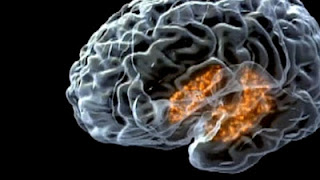Unit 7 Memory
Reading assignment: Bernstein
Text Pp. 234-274
Read and take
Cornell Notes Due Monday 12/8
Flashcards and
Concept Maps are Due Wednesday 12/10
Unit 7 Exam on Thursday
Dec. 11
We will have a
comprehensive MUST-PASS exam with FRQ– covering all material from the beginning
of the year on Tues. Dec. 16 and Wed.
Dec. 17 It’s time to organize your notes and flashcards from the whole
year and start to review. If you plan to score a 3, 4 or 5 on the AP Exam, now
is the time to buy and use an AP Review.
Key ideas from Memory
Unit:
Encoding, episodic
vs. semantic and procedural memory, explicit vs. implicit memory, maintenance
and rehearsal strategies to improve memory, various models of how memory works
such as PDP and Info Processing, understand the difference between sensory,
short term, and long term memory, compare recency and primacy effects,
understand what affects memory retrieval, understand the limits of eye-witness
testimony, Herman Ebbinghauss , compare retroactive and proactive
interference, compare retrograde and
anterograde amnesia,
*****Use mnemonics
and distributed practice to learn all this stuff and know why you are
remembering and forgetting.
Good overview of basic memory concepts.
A whole site dedicated to human memory... very helpful. It has this very complete concept map.
http://www.human-memory.net/types.html
Crash Course Psychology with our friend Hank!
How we make memories...
How we make memories...
Remembering and Forgetting
Some fun memory games you can do online
Elizabeth Loftus's Ted Talk - The Fiction of Memory... the rape conviction of an innocent man...
NOVA: How Memory Works
Article - What Science Says about Ferguson: Hacked memory. We may all be working from different sets of "facts" about the same event.
http://www.forbes.com/sites/fayeflam/2014/12/01/what-science-says-about-the-ferguson-case-memory-can-be-hacked/
This is not specifically about memory, but about implicit associations we make about people.
https://implicit.harvard.edu/implicit/demo/ You can take some of the Implicit Association Tests to see what some of your implicit associations about people and groups are. I’m putting it with this unit as an example of implicit vs. explicit thought processes.
Story from National Public Radio (NPR) about H.M., the man who had the bilateral removal of his hippocampus (What is the plural of hippocampus?) and ended up with the nearly complete inability to form new memories. Find out why he had his hippocampus removed and learn about this amazing case study of anterograde amnesia.
http://www.npr.org/templates/story/story.php?storyId=7584970
And an article from Psychology Today about H.M.
This video clip was made based on 2000 slices that were made of H.M.'s brain after he died in 2008.
And an article from Psychology Today about H.M.
This video clip was made based on 2000 slices that were made of H.M.'s brain after he died in 2008.
The movie Memento was the first feature film by star director Christopher Nolan who went on to direct The Dark Night and Inception. It is a fictional film about a character who, like H.M., loses the ability to create any new memories, but still tries to solve a horrible crime.
It is rated R due to some very violent content and adult language. If that sort of film is acceptable to you and your parents, you can stream it on Netflix or rent it. It's definitely not appropriate for younger siblings.




















